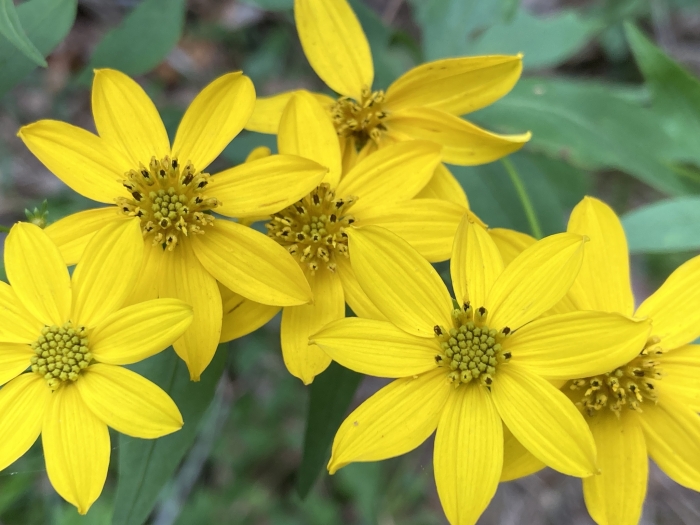Greater Tickseed
(Coreopsis major)
Greater Tickseed (Coreopsis major)
/
/

Hill Craddock
CC BY 4.0
Image By:
Hill Craddock
Recorded By:
Copyright:
CC BY 4.0
Copyright Notice:
Photo by: Hill Craddock | License Type: CC BY 4.0 | License URL: http://creativecommons.org/licenses/by/4.0/ | Rights Holder: Hill Craddock | Publisher: iNaturalist | Date Created: 2020-06-27T15:19:29Z |






















































Estimated Native Range
Summary
Coreopsis major, commonly known as Greater Tickseed, is a deciduous perennial herb native to open woodlands and pine barrens in the Southeastern United States. It typically grows to a height of 2-3 feet (0.6-0.9 meters) and a width of 1-2 feet (0.3-0.6 meters). The plant features lance-shaped leaves and bears bright yellow, daisy-like flowers with toothed tips on the rays, blooming profusely from late spring to mid-summer. The flowers are highly attractive to butterflies and other pollinators, adding to the plant’s ornamental value.
Greater Tickseed is valued for its showy flowers and ability to thrive in poor, sandy soils, making it an excellent choice for naturalistic plantings and wildflower gardens. It is often used in borders, as ground cover, or in pollinator gardens. This plant prefers full sun but can tolerate light shade and requires low to medium amounts of water, with well-drained soil being ideal. While generally low-maintenance, it can be susceptible to powdery mildew and root rot if overwatered or planted in poorly drained soils. Deadheading spent flowers can encourage a longer blooming period and prevent self-seeding, which can be prolific under ideal conditions.CC BY-SA 4.0
Greater Tickseed is valued for its showy flowers and ability to thrive in poor, sandy soils, making it an excellent choice for naturalistic plantings and wildflower gardens. It is often used in borders, as ground cover, or in pollinator gardens. This plant prefers full sun but can tolerate light shade and requires low to medium amounts of water, with well-drained soil being ideal. While generally low-maintenance, it can be susceptible to powdery mildew and root rot if overwatered or planted in poorly drained soils. Deadheading spent flowers can encourage a longer blooming period and prevent self-seeding, which can be prolific under ideal conditions.CC BY-SA 4.0
Plant Description
- Plant Type: Herb
- Height: 2-3 feet
- Width: 1-2 feet
- Growth Rate: Moderate
- Flower Color: Yellow
- Flowering Season: Summer
- Leaf Retention: Deciduous
Growth Requirements
- Sun: Full Sun
- Water: Low, Medium
- Drainage: Fast
Common Uses
Bee Garden, Bird Garden, Border Plant, Butterfly Garden, Deer Resistant, Drought Tolerant, Groundcover, Hummingbird Garden, Low Maintenance, Rabbit Resistant, Showy Flowers
Natural Habitat
Open woodlands and pine barrens in the Southeastern United States
Other Names
Common Names: Greater Coreopsis, Forest Tickseed
Scientific Names: , Coreopsis major, Coreopsis major var. stellata, Coreopsis major var. rigida, Coreopsis major f. oemleri, Coreopsis senifolia, Coreopsis major var. oemleri, Coreopsis major var. major, Coreopsis major f. major, Coreopsis senifolia var. rigida
GBIF Accepted Name: Coreopsis major Walter